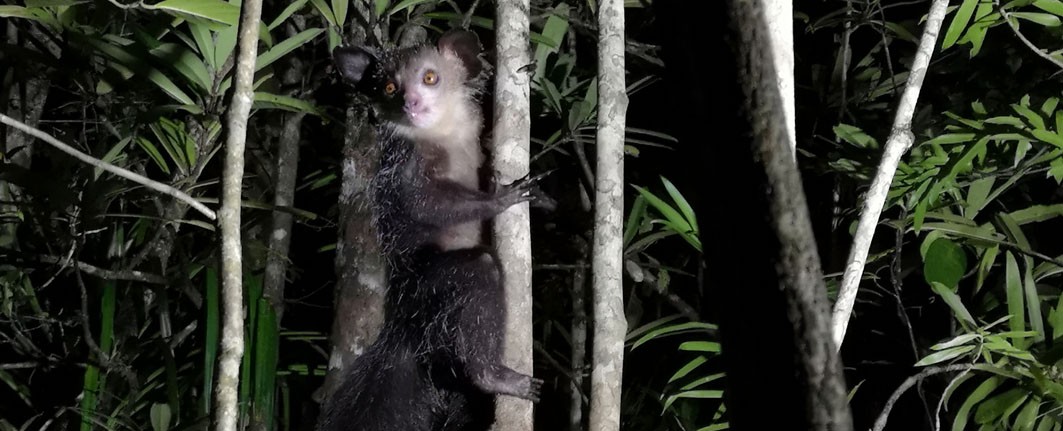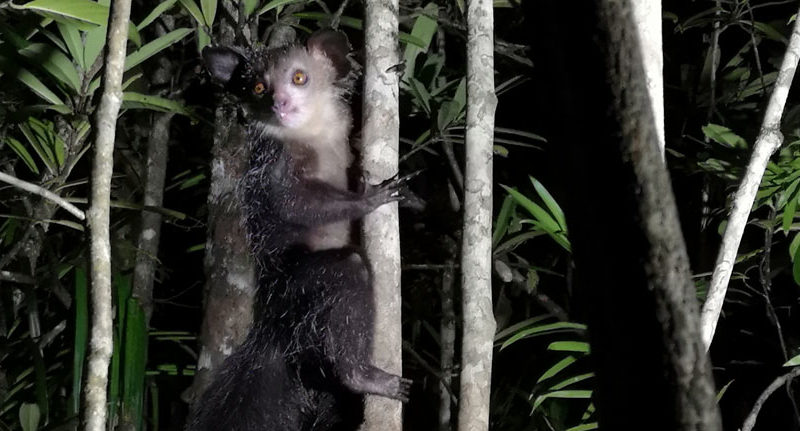
This remarkable creature is one of the world’s most bizarre animals. Madagascar aye aye. Its strangest features are its perpetually growing incisor teeth and its thin, elongated middle fingers, which are used to extract larvae from dead wood. Although it was sometimes considered to be a rodent in the past, recent genetic studies have placed it firmly in the lemurs. It forms its own family (one of Madagascar’s five lemur families), whose exact relationship to the other lemurs is still uncertain. An extinct giant aye-aye is known from subfossils.
DISTRIBUTION
Perhaps the most widely distributed lemur. Found in most of the forested environments on the island, although absent from the southwestern spiny forest.
ID of the Madagascar aye aye
The large eyes and ears, and grizzled black fur are distinctive. Larger than other nocturnal lemurs
VOICE
Rarely heard “aye-aye-aye” that gives the species its name
BEHAVIOUR
Nocturnal and generally solitary. Madagascar aye aye. One of its most important foods is the nut of the Ramy tree Canarium madagascariense, but it feeds on a variety of larvae, seeds, nectar, and fruit. Signs of Aye-aye feeding, such as gnawed nuts and holes in trees, are seen much more often than the animals themselves. Nests are often used for sleeping during the day. The birth of a single young does not seem to be seasonal; the female gives birth every 2–3 years.
WHERE TO SEE the Madagascar aye aye?
A remarkably shy and elusive nocturnal creature. Although Aye-aye is present in most national parks, it is very rarely seen. The best chance is on Ile Roger, or ‘Aye-aye Island’, which hosts an introduced population. This island is located off Mananara-Nord, in the northeast. Visits can be arranged by the owner of Chez Robert in Mananara-Nord, who owns the island. Nosy Mangabe, off Maroantsetra, was formerly good for Aye-aye, but the current ban on night walks in national parks has made it virtually impossible to find there. Some visitors have found Aye-aye on night walks around the town of Maroantseta.
Nightlife of the Eighth Continent
A visit to Madagascar would not be complete without at least one night walk in dry forest and another in rainforest. This is the best way to see a remarkably high proportion of the island’s wildlife. About half of the lemurs, several birds, and many geckos, snakes, and frogs are best sought at night, and chameleons are easiest to find when they sleep on conspicuous low tree limbs. Good local guides have flashlights, but keen visitors should bring a headlamp, and perhaps a more powerful light. Most mammals are easily spotted by their ‘eyeshine’ and local guides are remarkably good at finding amphibians and reptiles. Night walks inside the national protected area system have been prohibited for the last few years and visitors are now restricted to walks along main roads, in peripheral zones, or in community forests and other alternative reserves.
HT AGENCY TOURS
Luxury Madagascar with the best luxury African safari tours packages. Discover your next perfect destination with HT Agency Tours

